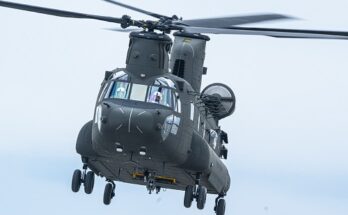
The U.S. Air Force, on behalf of the Space Force, awarded InDyne of Sterling, Virginia, a $66.3 million contract modification to a previously awarded contract (FA2517-18-C-8000 / FA2518-22-C-0001) to exercise option year four, extending Solid State Phased Array Radar Systems contract term. This will provide for continued management, operation, maintenance, and logistical support, and raises the total cumulative face value of the contract to $285.2 million.
The contracted work will be performed at Beale Air Force Base, California; Cape Cod Space Force Station, Massachusetts; Clear Space Force Station, Alaska; Thule Air Base, Greenland; Cheyenne Mountain Space Force Station, Colorado; and Royal Air Force Fylingdales, United Kingdom, and is expected to be completed by April 30, 2023.
The radars addressed in this contract encompass a range of facility-sized ballistic missile early warning radars, with Upgraded Early Warning Radars (UEWRs) and PAVE Phased Array Early Warning System (PAWS) units included. The facility at Clear Air Force Station, Alaska, includes a UEWR and the new Long Range Discrimination Radar (LRDR), an early warning unit whose technologies have been derived into the nascent AEGIS radar option, the SPY-7. Sensor data from these massive radars is fed into the United States’ sophisticated Ballistic Missile Defense System (BMDS) command center at Cheyenne Mountain.
The Air Force is obligating Fiscal Year 2022 Operation and Maintenance funds at the time of the award. The U.S. Space Acquisition Management Directorate, Peterson AFB, Colorado, is the contracting activity.
Forecast International’s Radar Forecast covers the airborne, land-based, and sea-based radar systems currently in development and production to equip military platforms of all types. A diverse set of programs are covered, including the land-based 3DELRR air search radar; UAV-specific models like the ZPY-3 MFAS surveillance radar; the F-35 Joint Strike Fighter’s APG-81 fire control radar; IFF secondary radars such as the APX-125; the sea-based SPY-6 Air and Missile Defense Radar (AMDR); and large system of systems products like the Joint STARS early warning suite. Market drivers such as surface fleet renewal, the rise of the next-generation fighter jet, and the growing influence of AESA and GaN-based radar architectures are covered as well. Click here to learn more.
In his role as a Senior Defense Electronics Analyst at Forecast International, C. Zachary Hofer's studies focus primarily on air, land, and sea radar systems, as well as the airborne electronics segment.


